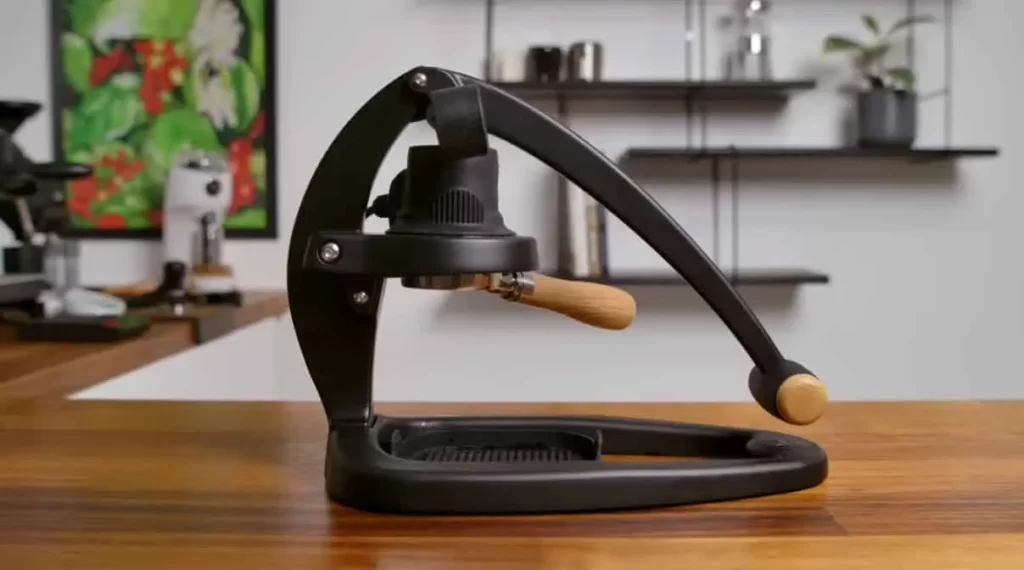Have you ever wanted to experience the taste and aroma of a delicious espresso, but without having to leave your home? Well, you’re in luck because manual espresso machines offer a way to make an authentic, barista-quality espresso right in your kitchen. While automatic espresso machines have become more popular in recent years, many coffee enthusiasts prefer the hands-on approach of a manual espresso machine.
Manual espresso machines are typically compact and affordable, making them a great option for coffee lovers who want to enjoy the process of making espresso at home. These machines require the user to manually grind and tamp coffee beans, load them into a portafilter, and pull the shot using a lever or piston. While this process can take some practice to perfect, the end result is a rich, flavorful espresso that rivals what you would find at your favorite coffee shop.
In this guide, we’ll walk you through the steps of using a manual espresso machine, including prepping the machine, pulling a shot, and maintaining and cleaning the machine. We’ll also troubleshoot common issues that may arise during the process. By the end of this guide, you’ll have the knowledge and confidence to make a perfect shot of espresso with your manual machine. So, grab your favorite bag of coffee beans and let’s get started!
Preparing to Use a Manual Espresso Machine
Before using a manual espresso machine, it’s important to gather all the necessary equipment and materials. You will need a manual espresso machine, a portafilter, a tamper, coffee beans, a coffee grinder, and a scale. Once you have all your equipment, you can begin the preheating process.
First, turn on your manual espresso machine and allow it to heat up for at least 10 minutes. During this time, you can preheat your portafilter by running it under hot water or placing it on the warming tray of the machine. This will ensure that the portafilter is at the same temperature as the machine, which will help to ensure a consistent extraction.
Next, you will need to grind your coffee beans to the appropriate consistency. For a manual espresso machine, a fine grind is recommended. Use a scale to measure out the correct amount of coffee, typically around 18-21 grams, and place it in the portafilter.
Using a tamper, firmly press the coffee grounds down into the portafilter. You want the coffee to be packed tightly and evenly to ensure an even extraction. A good rule of thumb is to apply 30 pounds of pressure when tamping the coffee.
Once your coffee is tamped, you can load the portafilter into the grouphead of the machine. Make sure it’s locked securely in place before proceeding with the extraction process.
These prepping steps, you’re setting yourself up for a successful and delicious shot of espresso. Take the time to perfect your prepping process and you’ll be well on your way to becoming a manual espresso machine pro!
Using a Manual Espresso Machine
Now that you’ve prepped your manual espresso machine, it’s time to start extracting your shot of espresso. This is where the real fun begins!

Start the Extraction
To start the extraction process, position your cup or shot glass under the portafilter and engage the lever or piston on the machine. The water will be forced through the tightly packed coffee grounds, creating a rich and flavorful shot of espresso.
The ideal extraction time for a manual espresso machine is between 25 and 30 seconds. If the extraction takes longer than 30 seconds, it may be due to a few factors such as an incorrect grind size, too much or too little coffee in the portafilter, or a low water temperature. Conversely, if the extraction takes less than 25 seconds, it could be due to a grind that is too coarse or not enough coffee in the portafilter.
Observe the Espresso
As the espresso is being extracted, keep an eye on the color and texture of the espresso as it drips into your cup. The crema, or foam, on top of the espresso should be a rich, reddish-brown color. The texture should be smooth and velvety, with no visible bubbles.
Taste the Espresso
After the shot is extracted, take a moment to savor the flavor and aroma of your freshly brewed espresso. A well-extracted shot of espresso should have a complex and balanced flavor profile, with notes of chocolate, caramel, and fruit.
Clean up
Once you’ve enjoyed your shot of espresso, it’s important to clean up your manual espresso machine. Remove the portafilter and discard the used coffee grounds. Rinse the portafilter and basket with water and wipe the machine down with a damp cloth. This will help to ensure that your machine is always ready for your next espresso-making session.
With a little practice and patience, using a manual espresso machine can be a rewarding and enjoyable experience. So, go ahead and experiment with different coffee beans, grind sizes, and extraction times to find your perfect shot of espresso!
Maintenance and Cleaning of a Manual Espresso Machine
Regular maintenance and cleaning of your manual espresso machine is essential to keep it functioning properly and to ensure that you always get the best possible shot of espresso. Here are some tips for maintaining and cleaning your machine:
Daily Cleaning
After each use, wipe down the steam wand with a damp cloth to remove any milk residue. Rinse the portafilter and basket with water and dry them thoroughly. Empty the drip tray and wipe it down with a damp cloth. This will help to prevent any buildup of coffee oils or milk residue, which can affect the flavor of your espresso.
Weekly Cleaning
Once a week, it’s important to deep clean your manual espresso machine. Start by removing the shower screen from the group head and soaking it in hot water and detergent. While the shower screen is soaking, backflush the machine by inserting a blind filter into the portafilter and running water through the group head. This will help to remove any buildup of coffee oils and debris that may be clogging the machine.
After backflushing, remove the blind filter and run hot water through the group head to rinse out any remaining debris. Reattach the shower screen and run a shot of water through the portafilter to ensure that everything is clean and clear.
Descaling
Over time, mineral buildup can occur in your manual espresso machine, especially if you have hard water. Descaling is the process of removing these mineral deposits and is essential for maintaining the performance of your machine.
To descale your manual espresso machine, fill the water tank with a descaling solution and run it through the machine according to the manufacturer’s instructions. Once the descaling solution has been flushed through the machine, run several shots of water through the portafilter to ensure that all of the solution has been rinsed out.
Regular Maintenance
In addition to daily and weekly cleaning, it’s important to perform regular maintenance on your manual espresso machine. This may include replacing gaskets, seals, and other parts that may wear out over time. Consult the manufacturer’s instructions for guidance on when and how to perform these tasks.
These maintenance and cleaning tips, you can help to ensure that your manual espresso machine always produces the best possible shot of espresso. With a little bit of care and attention, your machine can continue to provide you with delicious espresso for years to come.
Troubleshooting Common Issues with Manual Espresso Machines
Despite your best efforts to maintain and clean your manual espresso machine, issues may still arise from time to time. Here are some common issues and their potential solutions:
Low Pressure
If you’re not getting enough pressure when pulling a shot of espresso, there may be a problem with the machine’s pump. Check to make sure that the water tank is full and that the pump is working properly. If the pump is not working, it may need to be replaced.
Leaking
A leaky manual espresso machine can be caused by a variety of factors, such as a damaged gasket or a loose connection. Check all of the machine’s connections to make sure that they are tight and secure. If the gasket is damaged, it will need to be replaced.
Uneven Extraction
If the espresso is coming out of the portafilter unevenly, it may be due to uneven tamping or a clogged group head. Make sure that the coffee grounds are evenly distributed and tamped, and that the group head is clear of any debris. If the problem persists, you may need to descale the machine to remove any mineral buildup.
Bitter or Sour Espresso
If your espresso is tasting bitter or sour, it may be due to improper extraction. Make sure that you are using the correct amount of coffee and that the grind size is appropriate for your machine. If the shot is coming out too quickly, it may be under-extracted and taste sour. If it’s coming out too slowly, it may be over-extracted and taste bitter.
No Crema
Crema is the layer of foam that forms on top of a shot of espresso. If your espresso is not producing crema, it may be due to a number of factors, such as old coffee beans, a dirty portafilter, or an incorrect grind size. Try using fresher beans, cleaning the portafilter, and adjusting the grind size to see if this improves the crema.
Troubleshooting these common issues, you can often solve the problem and get your manual espresso machine back to producing delicious shots of espresso. However, if the problem persists or you are unsure of how to fix it, it’s always a good idea to consult the manufacturer’s instructions or seek the help of a professional.
Conclusion
Using a manual espresso machine can be a fun and rewarding experience for any coffee lover. With the right equipment, beans, and techniques, you can produce high-quality espresso drinks right in the comfort of your own home.
To get the most out of your manual espresso machine, it’s important to prepare properly, use the right techniques, and maintain and clean the machine regularly. By following the steps outlined in this guide, you can ensure that your manual espresso machine stays in top condition and produces delicious shots of espresso every time.
Remember, practice makes perfect when it comes to using a manual espresso machine. Don’t be discouraged if your first few attempts don’t turn out exactly as you’d like them to. With patience and perseverance, you’ll soon be able to pull perfect shots of espresso like a pro.
So, get your manual espresso machine out of the cupboard, gather your favorite coffee beans, and start practicing! With the tips and techniques outlined in this guide, you’ll be well on your way to becoming a master of manual espresso.
Ronsil
Meet Ronsil, the master barista behind EspressoRivo. With years of experience in the coffee industry, he brings a wealth of knowledge and passion to the table. As the owner of a successful coffee shop, Ronsil is a sought-after adviser in the field. His expertise and love for the craft shines through in every cup he serves. We are honored to have him as part of our team at EspressoRivo






